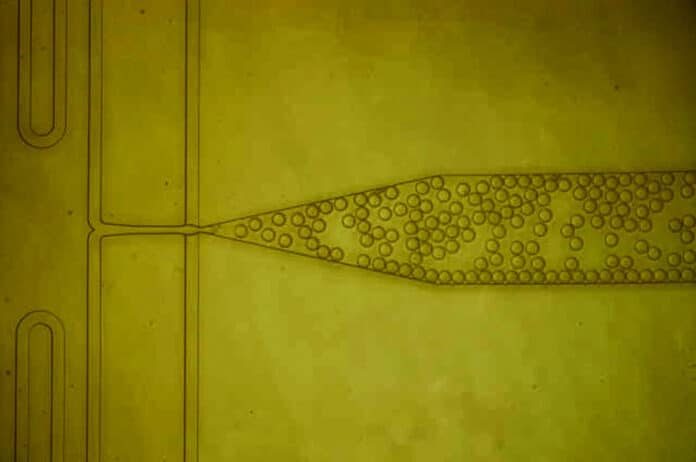Purification is one of the most expensive methods of manufacturing protein drugs. To make the method less expensive, MIT engineers have devised a new way to perform this kind of purification.
In a new study, they reported their new purification method, which uses specialized bioconjugate-functionalized nanoparticles to crystallize proteins rapidly. These proteins act as templates for enhancing protein crystal formation at low concentrations.
During the research, scientists applied their to crystallize lysozyme (an antimicrobial enzyme) and insulin. They believe their approach could be used on many other useful proteins, including antibody drugs and vaccines.
In earlier work, the group has modified interfaces for injecting highly viscous biologic medications or made polymers that reject water using nanoscale characteristics. The goal in this instance was to change nanoparticles to boost the protein concentration at the surface locally and act as a template for the proteins’ proper alignment and crystallization.
The scientists covered gold nanoparticles with bioconjugates, chemicals that can assist in forming bonds between other molecules to create the required surface. Maleimide and NHS bioconjugates, frequently used to tag proteins for research or attach protein medicines to drug-delivery nanoparticles, were employed.
The proteins assemble at the surface and bind to the bioconjugates when protein solutions are exposed to these coated nanoparticles. Moreover, the bioconjugates force the proteins to arrange themselves in a particular direction, building a framework for other proteins to attach to the crystal.
The scientists used the enzyme lysozyme, whose crystallization characteristics have been extensively researched, and insulin to show their methodology. They found that crystallization occurred much faster when the proteins were exposed to the bioconjugate-coated nanoparticles than bare or no nanoparticles.
Numerous other proteins could potentially benefit from it.
The induction time, which measures how long it takes for crystals to start forming, was reduced sevenfold with the coated particles. The nucleation rate, which measures how quickly crystals develop once they have started, was increased thrice.
MIT graduate student Caroline McCue said, “Even at low protein concentrations, we see many more crystals forming with these bioconjugate-functionalized nanoparticles. The functionalized nanoparticles reduce the induction time because these bioconjugates provide a specific site for binding proteins. And because the proteins are aligned, they can form a crystal faster.”
“In addition, the team used machine learning to analyze thousands of images of crystals. Protein crystallization is a stochastic process, so we needed a huge dataset to measure whether our approach improved the induction time and nucleation rate of crystallization. With so many images to process, machine learning is the best way to determine when crystals are forming in each image without having to go through and manually count each one.”
The study appears today in the journal ACS Applied Materials and Interfaces.
